B
Ben Custard
Guest
Verdict
While the changes are broadly cosmetic, the freshly updated MINI Electric offers an interesting alternative to the petrol models - so long as you can live with the relatively short range. It retains the MINI’s characteristic fun handling and is rapid in a straight line as well. A well-equipped and (mostly) well-built interior gives a sense of quality and, although there are some drawbacks, rapid charging gives some flexibility to undertake longer journeys.
MINI expects to double the production of the MINI Electric this year, and has updated its first EV in line with the rest of the hatchback range. It’s an early facelift as the Electric was only launched last year, but the changes are nonetheless welcome and should entice more buyers to make the step to all-electric motoring.
Out goes the grey grille that always reminded us of Zippy from Rainbow; it’s replaced by a smart-looking body-coloured part instead. Like the rest of the hatchback and convertible line-up, the grille is wider and taller than before, with a new black rim that’s joined by a chrome insert on selected models. There are no fog lights any more - vents for the brakes sit on the outskirts of the front bumper instead.
- SEE MORE Best electric cars to buy 2021
The facelift has also introduced new paint colours, alloy wheels and the Multitone roof, with three colours sprayed onto each other. Said to take four years to develop, it’s standard on the top-spec MINI Electric Collection.
The modern MINI marked its 20th anniversary last week, and it possibly spurred on the popularity of contrasting-colour roofs. Now, the Multitone roof is MINI’s latest attempt to offer something different. MINI now offers metallic paint and wheel upgrades at no extra cost, too.
Inside, the infotainment system gets a refresh, with a new set-up designed to replicate a smartphone. Nearby charging stations are included on the maps, and you can have a split-screen set-up with sat-nav directions posted next to the map. The MINI Electric’s original five-inch digital instrument cluster remains.
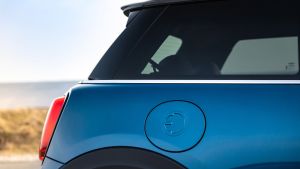
MINI Electric - side detail

MINI Electric - full front
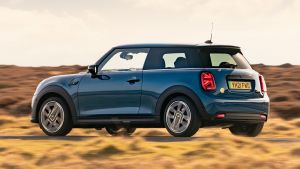
MINI Electric - rear action
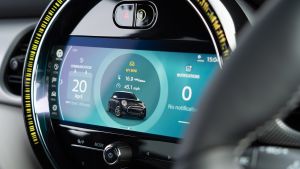
MINI Electric - infotainment
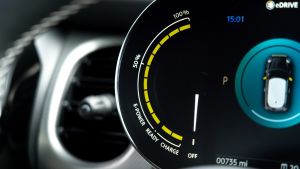
MINI Electric - dials
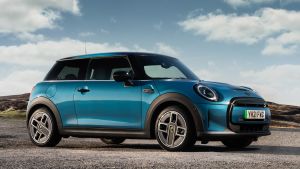
MINI Electric - front static
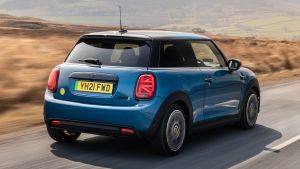
MINI Electric - rear

MINI Electric - dash
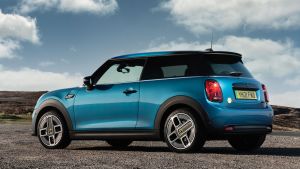
MINI Electric - rear static

MINI Electric - front action

MINI Electric - front
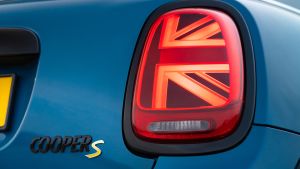
MINI Electric - rear light
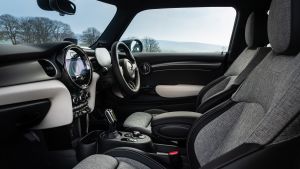
MINI Electric - front seats
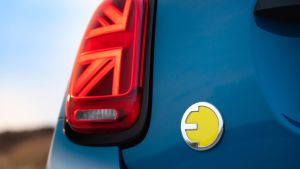
MINI Electric - rear badge
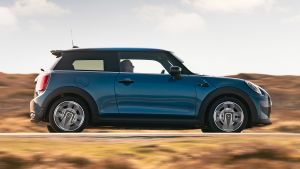
MINI Electric - side
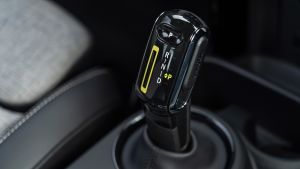
MINI Electric - transmission
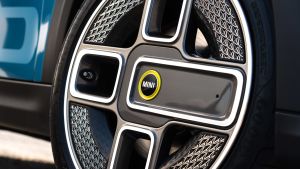
MINI Electric - wheel
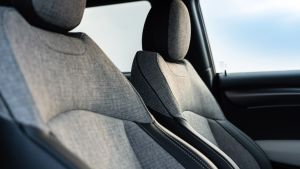
MINI Electric - seats
There are new steering wheel buttons, and MINI Electric buyers can now add roof rails, steering wheel heating (£250), active cruise control (£300) and sun protection glass (£250) as options on Level 2, and a grey leather interior on Level 3 cars.
Quality is generally excellent, and the screen is slightly more intuitive to use, but foibles remain. Those new buttons on the steering wheel are at odds with the rest of the cabin quality and feel cheap, which is disappointing considering they’re among the main touchpoints in the car.
Getting up to speed is swift enough thanks to the Electric’s instant torque delivery, especially when the MINI Electric is in Sport mode. The front-mounted 181bhp electric motor is responsive and delivers its 270Nm of torque smoothly for a 7.3-second 0-62mph time, with overtakes and quick exits from junctions easy and satisfying.
Crucially, the Electric is still great fun to drive, capable of putting a grin on your face on a twisty B-road. Turn-in is responsive, and choosing the highest level of brake regeneration (two settings are available) gives plenty of deceleration, so you rarely have to apply the brake pedal. With the heavy battery kept low, it always feels planted too.
The ride is firm like any MINI, but you never feel like you’re being shaken around too much. Our test car rode on the bigger 17-inch alloy wheels, so the standard 16s may be a little more comfortable.
Of the four driving modes, the Mid setting is likely to be the best compromise. Green offers a small boost in range by limiting the throttle response. Green+ turns off the air-conditioning and heated seats to save more energy.
Range remains a downside, but it shouldn’t be a deal breaker for the type of customer the MINI Electric is aimed at. Our test car had just over 70% charge when we got in, and showed a predicted range of 75 miles. In mixed driving, you’re probably looking at around 100 miles between charges, rather than the 145 that MINI quotes from the car’s 32.6kWh battery.

MINI Electric - side detail

MINI Electric - full front

MINI Electric - rear action

MINI Electric - infotainment

MINI Electric - dials

MINI Electric - front static

MINI Electric - rear

MINI Electric - dash

MINI Electric - rear static

MINI Electric - front action

MINI Electric - front

MINI Electric - rear light

MINI Electric - front seats

MINI Electric - rear badge

MINI Electric - side

MINI Electric - transmission

MINI Electric - wheel

MINI Electric - seats
But range anxiety is mitigated by a seemingly accurate range estimate, and even a motorway trip didn’t drastically reduce the car’s efficiency. Having the greener modes to eke out a few extra miles brings confidence in the system, too.
With 50kW rapid charging longer journeys are possible if you’re willing to spend just over half an hour taking a break at a motorway service station for an 80 per cent recharge, while overnight charging from a 7kW wallbox takes three hours and 12 minutes.
While this rapid charge capability helps with an element of practicality, the MINI Electric is more limited elsewhere. It’s only available in three-door form, unlike many of its rivals, such as the Honda e and Renault Zoe. As a result, access to the rear of the cabin isn’t the easiest, and it’s cramped once you’re in there.
The boot, too, isn’t the most spacious, with only 211 litres of luggage room on offer with the rear seats in place. However, at least Level 1 spec cars bring a decent amount of kit - sat nav, two-zone air-con and cruise control - for a £26,000 starting price including the government’s £2,500 plug-in car grant, but the extra equipment on Level 2 models (£28,000 including the PICG) makes it the sweet spot in the range.
Standard features include rear parking sensors and a reversing camera, heated seats, extra colour and wheel options and the driving assistance pack, including traffic sign recognition, automatic high-beam assistance and traffic sign recognition.
Level 3 (£32,000) and Collection (£32,550) cars add extra luxuries in a head-up display, self-parking ability, upgraded headlights and a panoramic roof, but are on the pricier side.
| Model: | MINI Electric Level 2 |
| Price: | £28,000 (including PICG) |
| Battery/engine: | 32.6kWh/one electric motor |
| Power/torque: | 181bhp/270Nm |
| Transmission: | Single-speed automatic, front-wheel drive |
| 0-62mph: | 7.3 seconds |
| Top speed: | 93mph |
| Range: | 145 miles |
| Charging: | 50kW (5-80 per cent in 36 mins) |
| On sale: | Now |
Continue reading...
